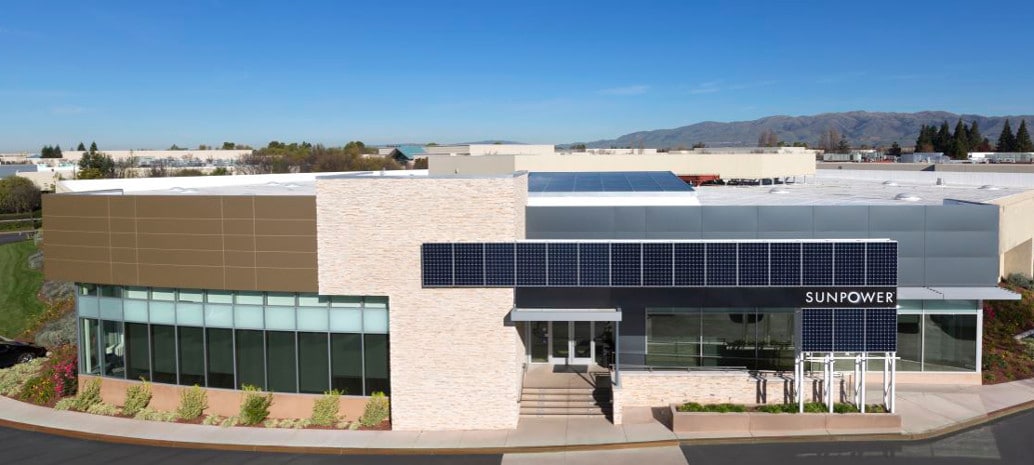Of all the companies involved in fight over the recently imposed Section 201 tariffs on PV modules, none has been as deeply involved or as affected by its outcome as SunPower. The PV cell and module maker offers the highest-efficiency solar panels on the market, but also some of the most expensive, and as such its products are hit more heavily by the ad valorem nature of the 30% tariffs on imports.
SunPower manufactures these products in the Philippines, Malaysia and Mexico, but besides a small pilot line in Silicon Valley, the company has no U.S manufacturing. This means that while much of the rhetoric of the Section 201 trade case was focused on the role of Chinese companies in undercutting prices, that the wide net cast by the global nature of the tariffs also caught SunPower.
With SunPower VP of Market Strategy and Policy Tom Starrs serving as chair of Solar Energy Industries Association (SEIA), the company has also led the fight against the 201 tariffs, but has also prioritized exempting its own products. And today the company filed its long-anticipated request for a formal exemption from the duties for its Interdigiated Back Contact (IBC) solar cells and modules made from these cells, through a process announced by the U.S. Trade Representative last month.
SunPower’s filing repeats many of the same arguments that is has made in the past as to why its particular products should not be subject to duties, including that the high-efficiency nature of IBC cells makes them unlike other solar products including low-cost crystalline silicon imports from China.
However, the company also lays out a case regarding U.S. employment that strikes to the heart of economic nationalist arguments about U.S. manufacturing and the complicated circumstances of global trade in high technology.
SunPower argues that even while it does not manufacture its primary products in the United States, that it secures high-quality polysilicon from U.S. producers, that the specialized, expensive equipment that its cells and modules are produced on are made in the United States, and that its specialized products are the product of “substantial domestic investment in research and development”.
The company goes further than that. From the filing:
copper-plated IBC technology was conceived and developed in the U.S., by engineers, scientists and technologists employed by an American company. The patented technology and manufacturing processes associated with it are American assets. Restricting the availability of this technology and know-how in the U.S. and curtailing domestic investment in research and development by failing to exclude solar cells and solar modules based on copper-plated, IBC technology will create a vacuum for foreign-owned companies, with intellectual property developed overseas, to fill.
For a long time, what SunPower is claiming was broadly true of much of the industry. Before China slapped retaliatory tariffs on U.S. polysilicon, companies such as Hemlock Semiconductor and REC Silicon were supplying poly to Chinese PV makers, to make solar cells and modules on equipment often made by U.S. or European tool makers.
However, as time goes on China is capturing not only the bulk of cell and module production, but Chinese companies are learning to make high-quality polysilicon – often with technology from U.S. companies – as well as tools.
Much of this is done through joint venture agreements with Western companies, such as the joint venture that SunPower holds with Zhonghuan Semiconductor for its massive P-Series module factory in China. However, SunPower now states that if it could get an exemption for its IBC products, it would be able to manufacture the P-Series in the United States.
Per SunPower’s filing:
…an exclusion for both our Copper-Plated IBC Cells and Copper-Plated Modules would free SunPower to devote substantial resources that otherwise would be dedicated to satisfying its additional customs duty liability to investments in next-generation research and development in the United States, as well as the establishment of U.S. manufacturing facilities dedicated to SunPower’s P-Series modules, for which an exclusion is not being requested.
This would be a new move for SunPower, which maintains only pilot lines in the United States. SunPower CEO Tom Werner has told pv magazine that his company’s interest in U.S. manufacturing was “catalyzed” by the Section 201 process.
“The tariffs certainly were a motivator in our thinking that its highly likely we’ll pursue manufacturing our P-Series in the U.S.,” stated Werner. “We’ve been looking at a U.S. manufacturing option for a while and have narrowed down sites to two.”
However, the odds of whether the U.S. Trade Representative will grant an exemption to SunPower, or to any manufacturer, are unknown. Last Friday’s deadline for filing exemptions now begins a 30-day public comment period.
This content is protected by copyright and may not be reused. If you want to cooperate with us and would like to reuse some of our content, please contact: editors@pv-magazine.com.









From my understanding of the lack of understanding and biases of the Trump administration – specifically its interest in fostering additional fossil fuel use and abuse – I am not confident Sun Power will be successful. It is the Trump-Gump thing: Stupid is as stupid does.
While I can see that point applied to the larger sector I am not sure how that relates to the success, or lack thereof, at SunPower. The company has its own particular circumstances and is not a microcosm of the larger industry. I also think Trump’s superficial economic nationalism is something that doesn’t neatly intersect with renewable energy, leading to unpredictable outcomes.